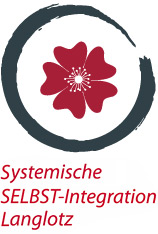Autonomy Diagram for Self-Diagnosis
Autonomy-Diagram PDF Download >>
for free.
Autonomy-Diagram
The Autonomy-Diagram is organized in such a way, that it summarizes all the core principles of the Systemic Self Integration in an easy an accessible way. Generally it can be divided in an upper and an lower semicircle. In the upper semicircle (A-C) one can find the representation of the individuals autonomy-aspects and in the lower semicircle one finds a representation of that persons symbiosis aspects. Autonomy and Symbiosis are the methods two key concepts. To better understand, how they are defined in the context of Systemic Self Integration, it is helpful to take a closer look at the three key aspects one can find within each of these semicircles.
Autonomy Aspects
Systemic Self Integration sees autonomy as the ability to set healthy Boundaries (A), by being able to differentiate between ones own space of identity and that of others (Self and Non-Self). The ability of differentiating between self and non-self opens up a personal (inner) space in and through which we are able to connect with our own innermost and inneate potential – the Self (B). In order for that structure of Self and personal space to become strong we have to develop our potential of healthy aggression (C). This ability is essential for us to sustain demarcation, self-protection and for tackling problems and coping with difficult situations – even in adverse circumstances.
Symbiosis Aspects
If our potential for autonomy is inhibited or gets blocked, we begin to develop symbiotic patterns of behavior. These are represented in the lower semicircles and are organized along three axes (A-D / B-E / C-F), where each symbiosis aspect on the opposite side of the respective autonomy aspect can be seen as a way of coping (compensation and de-compensation) with the inhibition of our natural autonomy.
D Over-rigid boundaries: When the differentiation between self and non-self is weakened, people tend to get overwhelmed by other people and/or situations. In order to deal with this “hyper-sensitivity” they begin to overcompensate by distancing in an extreme way from people and/or situations in an attempt to regain connection to themselves.
E Dominance: Being alienated from one’s own Self, people tend to more easily identify with other people and situations (Non-Self). The Non-Self begins to feel closer to them then that which is actually their own. They tend to feel more responsible for the other – than for themselves. In symbiotic relationships this attitude might even be romanticized as “love” or “thoughtfulness”. But when interacting with a person with sound boundaries this kind of behavior can easily feel very overbearing and in that way dominant or manipulative.
F Destructive Aggression: A lack of differentiation between Self and Non-Self and the resulting lack of contact with one’s own self obstruct a person’s ability to use their healthy potential for aggression in the right direction. These suppressed aggressive impulses accumulate and seek expression in other more destructive means and directions. The energy either gets directed against themselves: depressive paralysis, feelings of guilt, self-depreciation, self-hate, self-destruction and – on a more physical level – as stress and psychosomatic illnesses. Or it is directed outwards toward others, in the form of mental and physical violence.
Instructions for Completion and Evaluation
For each statement either mark
0= does not apply; 1= rarely; 2= sometimes; 3= frequently;
4= almost always.
Then add up your total score for each section. (A – F)
Scoring A – C: The values that you determined basically show you whether you are very or not very autonomous:
1-10 = lower, 11-20 = medium, 21 – 32 = higher autonomy index.
Scoring D-F: (Compensatory Symbiosis Aspects):
1-10 = lower; 11-20 = medium; 21 – 32 = higher symbiosis index:
Enter your results into the autonomy diagram. Changes after therapy can be determined and inserted into the diagram using a different color. In this way, the autonomy- state and its changes can be seen “at a glance”.
